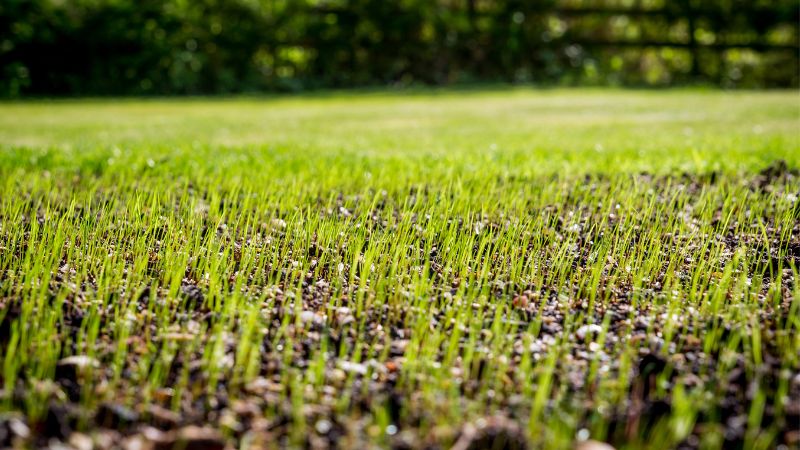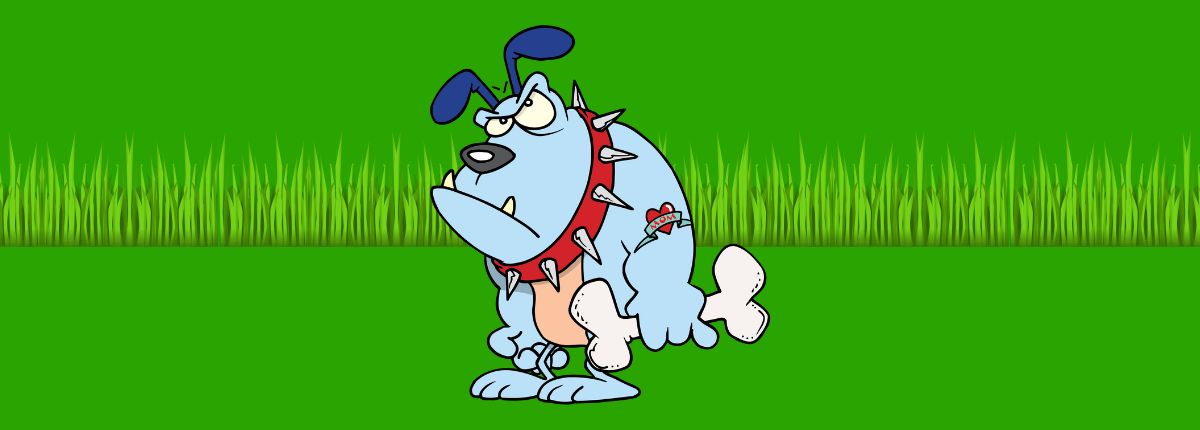Why do I have ruts in my lawn, and what should I do about them?
Table of Contents
Why do I have ruts in my lawn, and how do you fix them?
I have seen hundreds of rutted lawns over the years, and there are a multitude of things that may be causing the problem. This post lists the main culprits and the best way to repair the issues. I also discuss a simple fix that I have suggested to my customers for years, and they have used it with great success. Even better, it costs nothing.
Lawn ruts can be caused by the following things:
- Rain, moisture, or bad drainage.
- mowing patterns. Mowing your lawn the same way every time.
- heavy equipment, or cars.
- The breakdown of organic matter under your lawn (such as tree roots)
- High-traffic areas on your lawn
- Damage caused by children or animals.
Some shallow ruts can be fixed fairly easily, but when you get deeper ruts over four inches in depth, it can be a harder thing to level. Especially if it was made by heavy machinery or a vehicle. This kind of rut will most likely have compressed the soil, so this will need to be addressed as well.
What happens if you Ignore Ruts
When you have ruts in the lawn, not only does it make your lawn look bad, but it can also encourage diseases. It can damage your lawnmower, especially if the ruts are deep and your blade constantly hits the dirt. This could cause damage to the blade or worse still the crank.
Lastly, there is an increased chance that you could slip with your push mower and do some damage to yourself. Add in a blade spinning at speeds more than 200mph, I don’t even want to think about that. Even a lesser injury like a twisted ankle could put you out of action for a week or more.
I was out walking my German shepherd this morning and we took a shortcut across a paddock in an industrial area. They must have had a fully loaded truck cross it at some stage as there were large ruts in the long grass. We won’t be going that way again. Fortunately in your lawn, at least you know where the ruts are.

Common Causes of Lawn Ruts
So you may be wondering why do i have ruts in my lawn? . There is one answer. I have seen hundreds of rutted lawns over the years, and there are a multitude of things that may be causing the problem. This post lists the main culprits and the best way to repair the issues. I also discuss a simple fix that I have suggested to my customers for years, and they have used it with great success. Even better, it costs nothing.
avy machinery or a vehicle. This kind of rut will most likely have compressed the soil, so this will need to be addressed as well.
These are the most likely causes and symptoms.
Rain, moisture, or bad drainage.
Bad drainage is usually fairly easy to spot and hard to fix.
The main sign of bad drainage is a lawn that never dries out. You leave footprints when you walk through, and a mower will leave tracks.
When I come across a lawn like this, it is usually at the bottom of a gully or hill. This can also happen at the bottom of retaining walls.
It usually requires the laying of drains and soak holes, which is better left to the experts, so I won’t cover it here.
Listen to audiobooks while you work.

With a sixty-day free trial
Discover millions of ebooks, audiobooks, and so much more for just $9.99/month.
Mowing patterns.
Mowing your lawn the same way every time.
Whenever I come across this problem, it is usually due to an oddly shaped lawn. When people mow their lawns, they tend to take the path of least resistance. For example, if a lawn is long and narrow, people tend to mow it along the long side. If the lawn gets soft and pliable at any stage due to moisture, then mowing it this way time after time will cause the lawn to get permanent marks.
The way to avoid this is to mow the lawn when it is dry and change directions regularly.
One time, mow up and down, and the next time, mow across. This will reduce any mower ruts and give you a better lawn. It can take you longer to mow across narrow areas instead of following the long edge, but the results are worth the effort.
One problem that you may have using this system is trying to remember which way you mowed the lawn last time. I had that problem too when I had a lot of lawn trucks on the road. We never knew which way the lawn had been cut the last time, and we didn’t want to write it down on the job sheets to look up later, so I came up with a simple system.
I told the guys to look at the date before mowing.
An odd date means mowing up and down.
An even date = mow across.
Using this method will give you an easy way to keep changing direction without having to think about it.

heavy equipment, or cars.
If someone has driven on the lawn or used any kind of heavy equipment on the lawn and it has sunk in more than a few inches, then this will require some work to get it right.
Not only will you have ruts, but you will also have compression in the soil. This means that if you want to bring the lawn back to its original state, you will need to decompress the soil using a garden fork or something similar.
Fixing deep ruts.
First, have a look at the bottom rut. Is there any lawn stuff there? If so, this will help speed up the recovery time. If the turf at the bottom of the rut is salvageable, then take the turf in squares about a foot square and a couple of inches deep. Put this aside, as you will need it later.
Now take a garden fork or a spade and turn over the dirt at the bottom of the rut.
You can put a layer of gravel at the bottom. This will help with drainage and give you a good base to work with.
Mix some sand, soil, and compost (a third of each).
Now fill up the rut, leaving about an inch of space at the top.
Now place the turf on top.
It doesn’t matter if the tuft is an inch or so higher than the rut. It should settle over time.
Now stake it off, leave it to heal, and do not dive into it again.
Have a look at it a couple of months later and top it up if necessary using fine soil.
High-traffic areas on your lawn
The best way to approach this is to try to give the high-traffic area a rest. Try to stake the area off. If this cannot be done, consider laying pathing stones.
If you can rope the area, then go over the area with a fork or a rake and break up the surface of the soil. Then lay a layer of the soil, sand, and compost mix on top. Lay the plant seed on top and let it grow. Do not cut the grass until it is a few inches high and well-rooted. Make sure your mower blade is sharp and you mow high when you cut it.

To get the best results with grass seed, you will need to sow it at the right time.
If you sow grass seed out of season, it may not grow. If you have warm-season grass, you should do this in late spring. For cool-season grasses, wait until early fall.
If you are not too worried, you can throw down some grass seed as soon as you finish. You never know. It may just grow anyway.
The breakdown of organic matter under your lawn (such as tree roots)
If you have a tree stump on your lawn, then you may get indentations where the roots have rotted. One thing I would advise before fixing that kind of damage is to walk around the stump, testing the ground. You will usually find a couple more spots that are soft underfoot and could do with some attention.
Once you have found the areas that need work, fill them with your soil mix and lay a bit of grass seed. The holes will turn back into the lawn fairly quickly.
Lawnmowing101 Membership

Build a six-figure lawn care business
Lawn Care Software

Get Your Lawn Care Business Running Smoothly
Easier for you and your customers. Jobber helps you quote, schedule, invoice, and get paid—all in one place.
A simple, free way to fix small ruts.
One trick I have used many times over the years that has worked well is grass clippings.
As I am mowing a lawn, if I see a small hole or rut, I will pack it with grass clippings from the catcher. I then stand on it to compress the clippings down.
I keep doing this every time I mow the lawn. Over time, it fills up, and the grass from the surrounding lawn will cover it.
If you have ever dug out an old compost bin full of lawn clippings, you will notice that it turns into great dirt that is full of worms. It’s a little nitrogen-rich, but if that’s a concern, you can always add a little lime.
I have even used lawn clippings to fill up a hole left by a pool. Only the bottom two feet of the pool were buried, but we filled the hole, and it is now solid and has started growing grass in some places.
We were able to avoid going to the grass dump for a year or so. My old swimming pool hole is now packed with grass clippings and starting to regrow.
For further reading this study on repairing damaged lawns by the The University of Minnesota is worth reading

When Is the Best Time to Mow a Lawn? Optimal Times Revealed
Now that you know how to get your lawn nice and level. How about mowing it at the optimal time to get a great looking lawn. Find out more here
When Is the Best Time to Mow a Lawn? Optimal Times Revealed
Get tips & tricks on how to grow a profitable lawn care business delivered to you inbox every week.






Leave a Reply